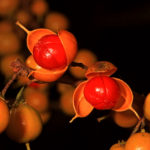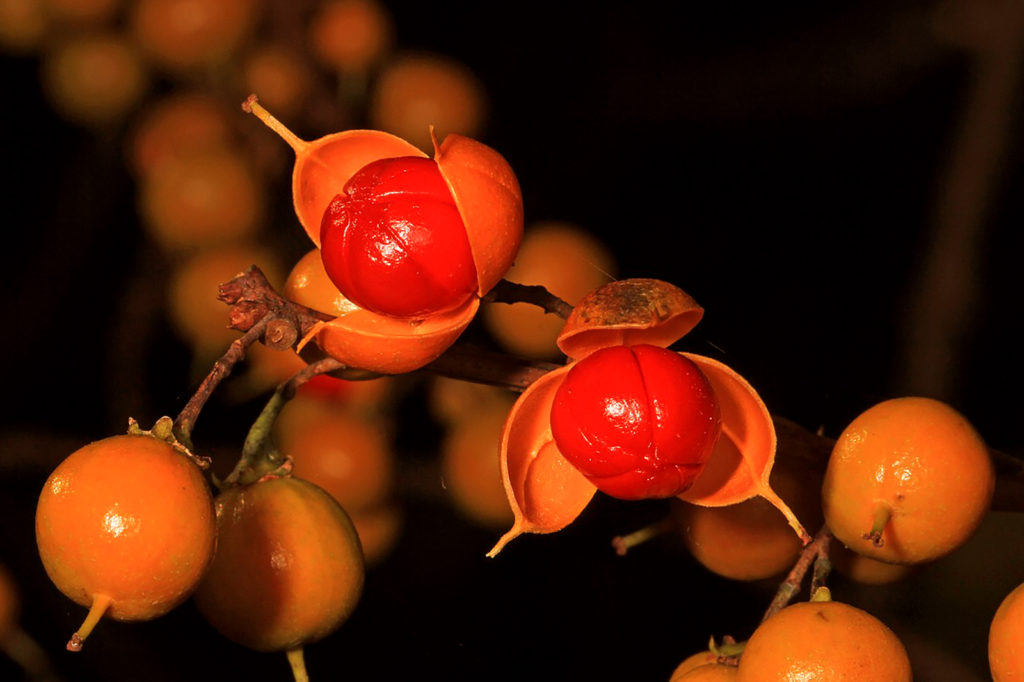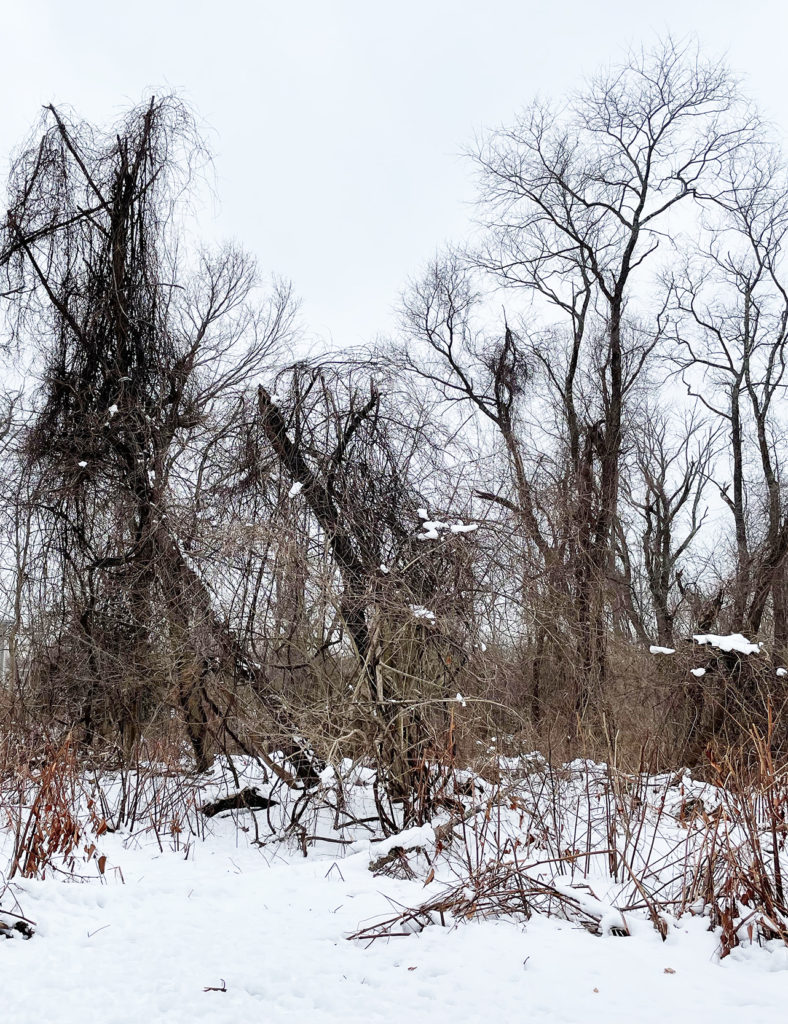
By Carolyn Bishop
Asian bittersweet (Celastrus orbiculatus), also known as Oriental bittersweet, is one of the most beautiful and problematic invasive plant species in our area. In the past, bittersweet was commonly sold in wreaths and floral arrangements, which were especially popular in the fall due to bittersweet’s brilliant yellow-shelled orange berries. Little did we know we were helping to spread a very invasive, damaging, non-native plant.
Asian bittersweet was brought to the United States in the 1860s as an ornamental and for erosion control. Now it is found from Ontario and Quebec south through the Great Lakes states, from New England to Florida, Louisiana, and the southeastern edge of the Great Plains.
Asian bittersweet smothers plants with its dense foliage as it strangles stems and trunks. In some areas, it blankets entire stretches of woodlands. For years, it was planted along roadways and highways for erosion control. Now you can see thick banks of Asian bittersweet all along major highways: for example, Route 2 heading west from Belmont. Its yellow leaves are notable in the fall.
The glossy, rounded leaves with finely serrated edges alternate on a twining vine which is often ignored because it is so attractive. The pretty vine turns into a thick, twining plant that climbs large trees and flourishes in the tree canopy, cutting off the sunlight to the host tree. The female plant’s beautiful berries are enjoyed and spread by birds and animals. This plant seems to thrive in any soil, in sun or shade, and spreads by roots and berries.
Undisturbed, Asian bittersweet can grow large enough to strangle trees and break branches, especially when ice and snow add weight to the mass of suffocating vines. Asian bittersweet can change the composition and structure and appearance of forested areas as it gradually kills and brings down trees large and small. This change is occurring in Belmont, as evidenced by tree death at Lone Tree Hill, Rock Meadow, Beaver Brook Reservation, along roads, and in the area between the high school and the railroad tracks.
The American bittersweet (Celastrus scandens) is not as aggressive and has red berries clustered at the end of branches. It is rare, succumbing to the more aggressive Asian bittersweet that can have orange berries growing at the leaf axils anywhere along the stems. Unfortunately, these plants can hybridize, making American bittersweet even rarer.
Controlling Asian bittersweet is challenging. The vine can grow to six inches in diameter and as long as 50 feet. Cutting vines down to relieve the weight on trees does not control the plant. Complete control requires different treatments and continued vigilance to manage regrowth.
Digging
Digging up the young plants requires care to get out the rootlets that can sprout all along the vine and vigilance to catch regrowth. Established vines are probably beyond the stage where digging can achieve control, and care must be taken not to damage the roots of the host tree.
Cutting with Herbicide Treatment
The best time for this method is after July 1 so that the Asiatic bittersweet will internalize the herbicide during a season of active growth. The challenge is not harming the host tree while sawing through the vine and treating the cut surface with herbicide. Trained field technicians usually cut Asian bittersweet vines about shoulder height for convenience and then cut them again lower to the ground to speed the chemical’s progress to the roots. The herbicide can be dyed to mark the treated vine. While herbicides are not generally recommended if alternatives exist, this approach minimizes risk to other plants compared to using a broadcast foliar spray. Glyphosate (commercially known as Roundup) with a water base is commonly used.
Slash and Treat
Depending on the diameter of the vine, a single slash is made for every inch in diameter and then treated with the herbicide. A two-inch-diameter vine would get two cuts on the vertical vine which are then treated with herbicide. The cuts must not girdle or sever the vine. This treatment can be done year-round as sap and other liquids flow up and down the vine seasonally.
Basal Bark
This is a treatment with an oil-based herbicide “painted” on the vine and probably best done by a professional. It is for vines up to 6 inches in diameter and is best applied in the fall in temperatures higher than 50F. It takes up to six months to take effect.
When disposing of bittersweet plant parts, do not compost them or put them in yard waste; you could spread viable seeds and stems. Instead, wrap or bag them and put them in the trash.
Controlling Asian bittersweet is a major project, but it is worthwhile to save the mature trees that are threatened by this sturdy invasive. There are several sites on Belmont properties, such as Lone Tree Hill, where Asian bittersweet is flourishing. Control programs would be challenging but rewarding projects (see ”Restoration Projects Approved for Lone Tree Hill” in this issue of the Belmont Citizens Forum Newsletter and “Committee Battles Invasives at Lone Tree Hill,” January/February 2021 BCF Newsletter.)
Caroline Bishop has served on multiple town committees, including the Conservation Commission, and on a State Advisory Committee on Pesticides.




Sorry, the comment form is closed at this time.